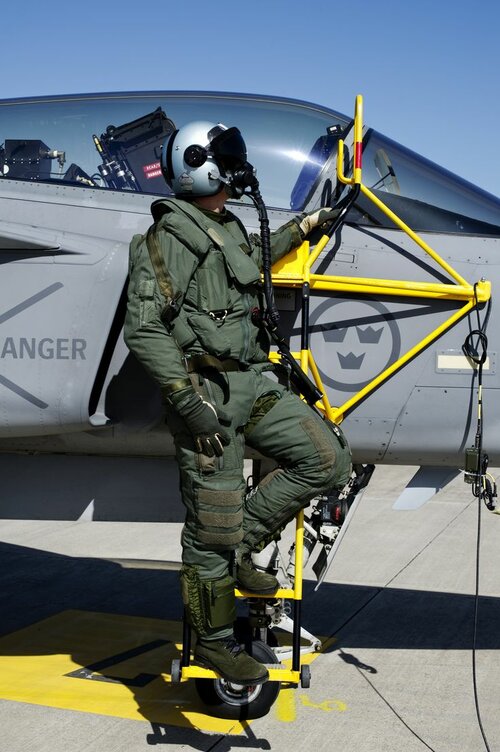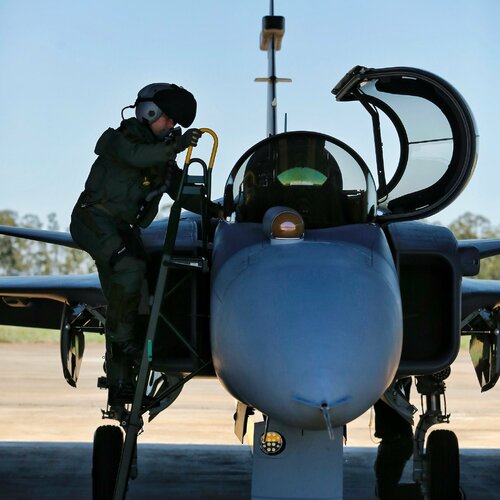Does anyone know when -7001 and 7003 first flew? Or what has become of -7004 and -7005 - which were to have been at Edwards by now?
Does that help?
N381TX:
N382TX: 23rd February 2017 (+ or - one day)
Last edited:
Does anyone know when -7001 and 7003 first flew? Or what has become of -7004 and -7005 - which were to have been at Edwards by now?
As touched upon in that article Magic Carpet has essentially made it easy for pilots. I have heard numerous USN pilots say that it is fantastic.
Rationally, I don´t see what would be the real advantages of deleting the hook. Loosing pilots in hanger, because of mission stress or accident in the landing pattern following battle damage would be immensely more costly. IMOHO, I would even say, impounding a cost so heavy to seriously compromise USN success.
Before getting all worked up why don't you read up about Magic Carpet (otherwise known as precision landing mode (PLM)) and see what it actually offers pilots.It seems contrary to any logics that what is the very essence of a Naval pilot isn´t anymore properly present in their syllabus. What could go wrong will go wrong. And worst at war.
Having two different aircraft variants, one of which is more expensive and only there for a supposed minor part of the curriculum is ridiculous and would be costly. If you are really wanting the pilots to 'manually fly' this part of the curriculum, use a modern simulator.Rationally, the cost approach does not make sense, 1st, see the above argument. Second if deleting the tailhook is there to allow trainee to use a lighter/cheaper trainer aircraft... Why not having 2 different models? Carrier qualifications are done near Naval bases for safety reasons, in case you have to divert for example. You can have based there your beefed up birds and just buy a regular USAF version for flight training, making sure it can land without flaring etc... The economy of scale would be favorable with the offset of the full syllabus flight hours per trainee on the land only version (less flight hours logged - And a relatively small fleet of carrier capable airframe shared among many squadrons running deck qualifications exercises).
There are savings in both cost and time which translates into more effective use of budget and ability to generate trained pilots. there is no compromise.Rationally, I don´t see what would be the real advantages of deleting the hook. Loosing pilots in hanger, because of mission stress or accident in the landing pattern following battle damage would be immensely more costly. IMOHO, I would even say, impounding a cost so heavy to seriously compromise USN success.
It's not short sighted. It is smart use of budget and is based upon the real world.Eliminating the arrestor-hook seems to be a classic example of bean-counters engaging in short-sighted penny-pinching, hopefully this decision will be reversed in the near future.
Agree, for too long a naval aviator has been judged more on his proficiency landing on the boat than his tactical acumen. Magic carpet has changed that and allows them to more properly focus on the TTPs of fighter employment.It's not short sighted. It is smart use of budget and is based upon the real world.
You do know that the single most dangerous/stressful part of a naval aviator's flight was landing on the carrier, right?Agree, for too long a naval aviator has been judged more on his proficiency landing on the boat than his tactical acumen. Magic carpet has changed that and allows them to more properly focus on the TTPs of fighter employment.
Am I crazy in thinking it should be able to fly supersonic or was this a decision to reduce capability and thereby limit cost
It's my understanding that tactical aircraft don't usually spend a lot of time supersonic. May not even be able to, if they're carrying a bombload.Question, any info on the T-7 and whether it will ever fly supersonic? I see the Boeing page lists the max mach as 0.975 with the obtuse statement of expected performance/envelope tested.
Am I crazy in thinking it should be able to fly supersonic or was this a decision to reduce capability and thereby limit cost?
Sorry I should have been more clear. The intent of T-X was to prep aircrew for 5th gen platforms which are more likely, given internal weapons large fuel volume and higher thrust engines etc, to be supersonic compared to 4th gen. The T-38 is supersonic and I expected then that while it wasn't an essential requirement it would have been a desirable one.It's my understanding that tactical aircraft don't usually spend a lot of time supersonic. May not even be able to, if they're carrying a bombload.
I've been supersonic a host of times and I remember my first time for it being such a non event. The pilot in the front seat announced we have passed mach one and I had not noticed a thing.And from what I've heard from friends and read, going supersonic doesn't really feel all that different inside the plane. You're going faster, but nothing weird happens that would need specific training to cover.
I expect so and somewhat disappointed by that. The T-7 almost certainly better replicates high AoA compared to the T-38 but I think the BVR training likely is diminished with no supersonic performance.Edit: so it was a deliberate choice to not go supersonic, saving money.

Perhaps although that also likely comes down to cost. There is a mighty amount of cost overrun to recoup here so I expect they will limit changes where possible..T-7 is a 30deg AoA trainer, something that is already a high value today. It is possible also that Boeing will open gradually the flight domain there, like they have done with the Hornet.
Modestly but not yet demonstrated?From Boeing
View attachment 742917
T-7 is also modestly supersonic, as a design and probably only limited for cost concerns under the Mach 1 mark.
One would have thought one of the original pioneers of designing aircraft for away from base operations would have long realised a built-in ladder is essential... More likely it is not essential - your ground crew would deploy ahead of time with essential GSE anyway - and it's likely not needed given a trainer is unlikely to often deploy away from home especially in short notice as other have mentioned.New T-7 arrive at Edward

#usaf #afotec #afmc | 412th Test Wing, Edwards Air Force Base
Safely landed and ready for test! Another Boeing T-7A Red Hawk and a BTX prototype have arrived at Edwards. The aircraft will enhance the ongoing flight test campaign to deliver an advanced pilot training system for the #USAF. The T-7A Integrated Test Force, part of the Airpower Foundations...www.linkedin.com
View attachment 737873
But did the Swede did it again?!*
Notice the lack of recessed ladders to deplane, for an aircraft that would spend a significant part of its service life deployed away from the squadron's airfield, forcing the instructor pilot to make his way down to the front cockpit like a rope walker (that looks awfully precarious to do such multiple times a day)?!
See also how the brackets to secure the canopy locked position will invariably be damaged/bent by pilots using them to secure their footing.

TomcatVIP is talking about the actual Gripen NG, the demonstrator Saab built and flew trying to convince people the E was a good idea...Errr... no.
Gripen A, C, E - single-seater
Gripen B, D, F - twin-seater
Gripen NG renamed to Gripen E/F.
First Gripen F yet to be completed.

Gripen E uses an external ladder like all other Gripen models? Or am I misunderstanding you?Believed it or not, the Gripen E initially came without. Early pictures showed instructors having to do their last acrobatic play by walking on the cockpit edges to reach the trainee unique ladder.
It changed then. Either someone made a remark that reached mature ears... or the rate of Flight Instructors on seek leave after recovering from injuries sustained in a fall outpaced the expectations of the intrepid cost cutter.

I see. Yes, they added a "boarding plank". The main ladder they share between the two versions and the boarding ladder just rests on the ladder and on the fuselage. On SAAF aircraft at least. Swedish test aircraft have a fancier one with railings I've seen.Initially, only the front seat had a ladder system designed for deplaning. Just like the T-7 today.
The instructor, someone that usually flies several flight a day with different trainee, had to play tightrope walker his way to the front cockpit to access the ladder. Given that Sweden is (nearly) under negative temperature half the year (Celsius), that made this design choice even more dubious.
Today, Gripen twins seat airframe have a ladder system that grants individual access fully to both cockpit
It doesn't feel different as a passenger, the control forces on the flight controls do feel different, especially for non-fly-by-wire. The T-38 for instance has a very interesting pitch trim curve through transonic into supersonic flight. Even the Viper becomes statically stable in pitch and will have different pitch characteristics super versus subsonic. Although this is less of an issue with FBW.And from what I've heard from friends and read, going supersonic doesn't really feel all that different inside the plane. You're going faster, but nothing weird happens that would need specific training to cover.
Edit: so it was a deliberate choice to not go supersonic, saving money.


The variant also appears to have TEFs that are split.Boeing @ JA2024
A normal LEF?


Boeing completes final tests of T-7A Red Hawk Jet Trainer before Full-Scale Production
Boeing completes final tests of T-7A Red Hawk Jet Trainer before Full-Scale Productionwww.armyrecognition.com

